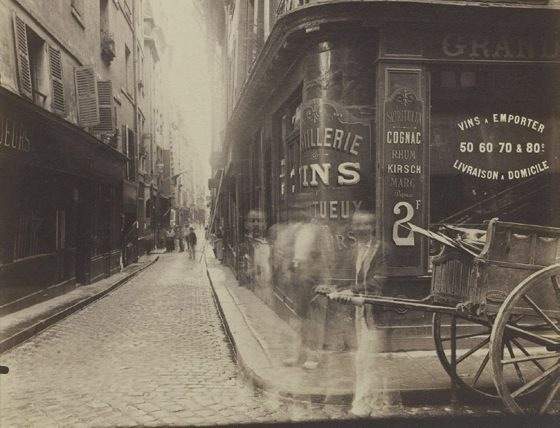Eugene Atget: Old Paris
The founder of photo documentary celebrated Parisian streets and lingered in laneways.
Overview
If you are fashion-focused or innately sartorially splendid, chances are you have trawled though, a little longingly, webpages devoted to street style. The allure of these portraits is partly due to the artful arrangement of clothes the wearer is rocking, and partly, I’m sure, the fascinating streetscape beyond the fashionable finery.
When you think about it, there is little that wouldn't look rockstar against a setting of cobblestones, cafes and kerbside bicycles. The scene beyond the subject hints at their story in a mid-moment snatch of someone else's daily life and, as such, the place itself becomes a part of the character. The most delicious of these fashion-focused streetscapes must be Paris. And for the most enchanting portraits of Paris as indeed subject and setting, you must go to see the Eugene Atget: Old Paris exhibition.
Touted as the founder of photo-documentary, Atget tirelessly trawled the streets of Paris during the early 20th century and created some 30,000 prints. It was a time of change for Paris as the modernisation program took place and it is this collection of Atget’s old Paris that showcases his eye for the beauty, melancholy and the ephemerality of the old city. Here, the streets are celebrated: laneways are lingered on and Atget creates often surreal compositions of archways and sculptured stairways. There are hints of people and events – a scattering of garbage or a smudge of a fellow’s shadow – but Atget’s streets are mostly unpopulated, and there is something equally calming and unnerving about that.
Paris is a place fuelled so dreamily by myth and romance it is near impossible to separate it from its cliched self, but here Atget shows us a city which is at times lost and decaying, other times jubilant and delightful, yet all the while familiar. When he knew a place was marked for destruction, Atget would note the address and date on the back of the print, preserving the building’s memory in anticipation of its death. (Trivia: look out for the not-yet famous photographer Jacques-Henri Lartigue, captured by Atget in his street-style glory.)
It is the first time a major collection of Atget's work has been showcased in Australia, and as such, expect crowds and chatter on the weekend. If you can, drop in midweek and languorously while away the time in the ever-mysterious, magical city of Paris.
Image: Shop sign au Remouleur on the corner of the rue des Nonnains-d'Hyeres and rue de I'Hotel-de-Ville, 4th arrondissement July 1899





